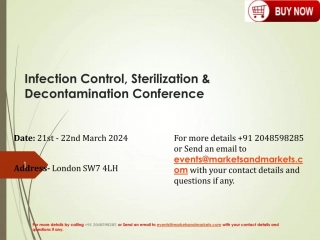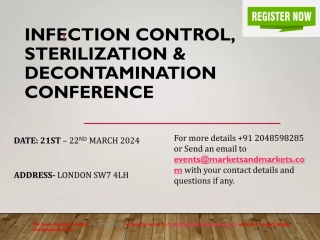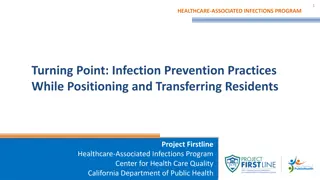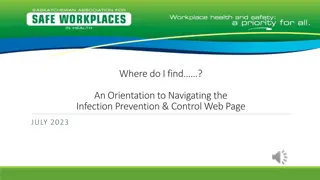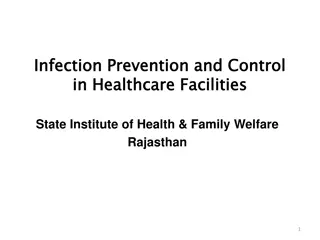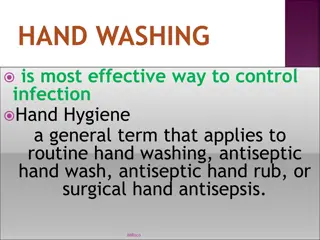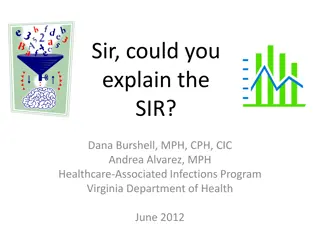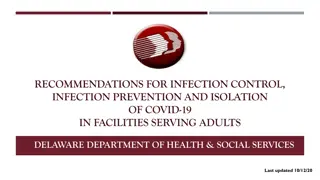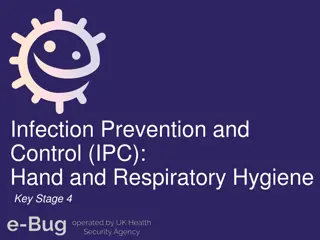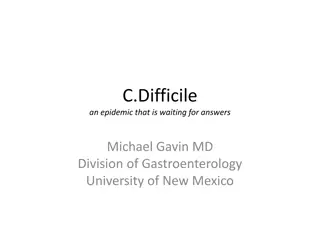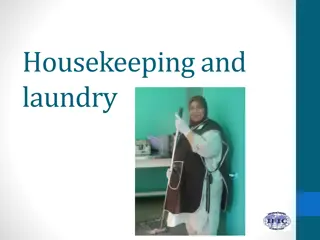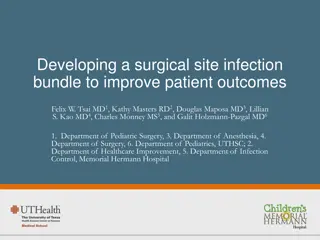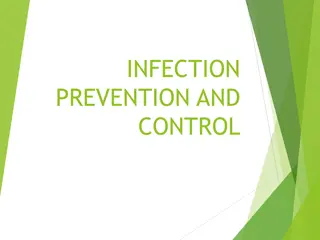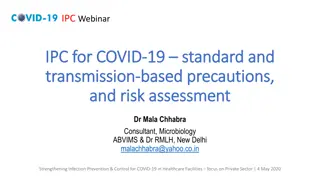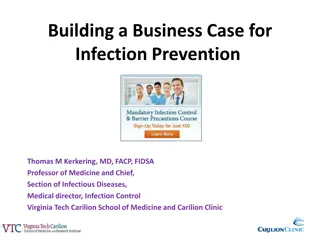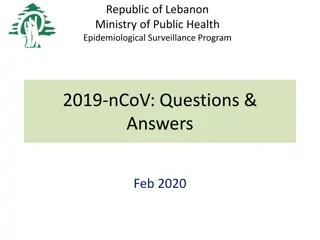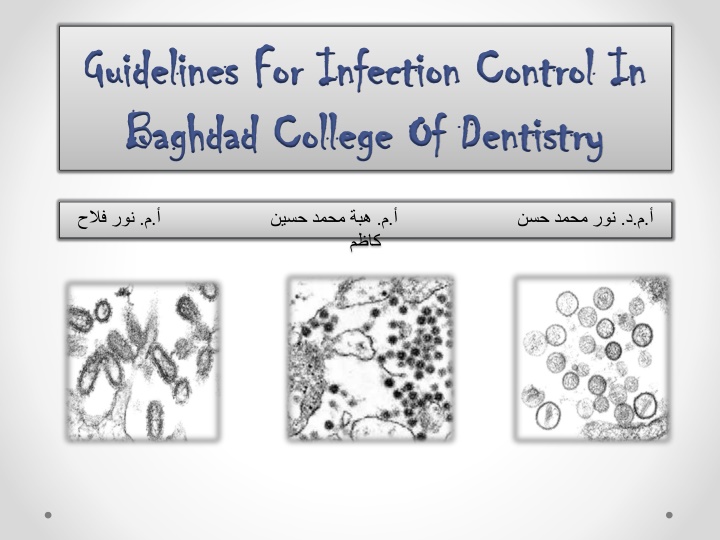
Guidelines for Infection Control in Dental Surgery Environments
This guideline from Baghdad College of Dentistry outlines effective systems for preventing and controlling infections and communicable diseases within dental surgery environments. It covers areas such as instrument cleaning, sterilization processes, room organization, personal protective equipment, and instrument packaging to safeguard patients, staff, and the public. By following these guidelines, dental practices can ensure a safe and hygienic environment for all stakeholders.
Download Presentation

Please find below an Image/Link to download the presentation.
The content on the website is provided AS IS for your information and personal use only. It may not be sold, licensed, or shared on other websites without obtaining consent from the author. If you encounter any issues during the download, it is possible that the publisher has removed the file from their server.
You are allowed to download the files provided on this website for personal or commercial use, subject to the condition that they are used lawfully. All files are the property of their respective owners.
The content on the website is provided AS IS for your information and personal use only. It may not be sold, licensed, or shared on other websites without obtaining consent from the author.
E N D
Presentation Transcript
Guidelines For Infection Control In Guidelines For Infection Control In Baghdad College Of Dentistry Baghdad College Of Dentistry . . . . . . .
GUIDELINES OBJECTIVE The objective of this guideline is to establish effective systems for preventing and controlling infection and communicable diseases within dental surgery environments. This guideline aims to safeguard patients, staff, and the public by outlining criteria, responsibilities, and necessary systems.
Instrument Cleaning and Sterilization Process Pre-cleaning: Remove debris by using appropriate cleaning solutions. Packaging: Sterilization cassettes before processed in an autoclave. Sterilization: Autoclaves should be regularly tested and maintained. Storage: Clean, dry environment.
Instrument Processing Room Divide the room into three distinct sections Receiving and Decontamination: receiving instruments decontamination cleaning. Sorting and Packaging: sorting instruments preparing for processing. Sterilization and Storage Sterilization appropriate storage
Instrument Cleaning and Pre-cleaning Personal Protective Equipment (PPE): utility gloves, masks, protective glasses, and protective clothing. Prompt Cleaning: visible blood should be cleaned. Holding Solution : If immediate cleaning isn t possible, immerse instruments in a detergent or an enzymatic cleanser. Disinfectant Solution: before cleaning, immerse instruments in a moderate- strength disinfectant solution to ensure a safe handling. Manual Scrubbing: less preferable, if needed, long-handled brush.. Automated Cleaning: Ultrasonic cleaning devices eliminate the need for manual scrubbing and pre-cleaning disinfection. Rinsing: rinse instruments with water, remove any residual chemicals or detergents.
Instruments packaging If any remaining contamination, discard the instrument, ensure another cycle of the cleaning process. Inspection Drying Instruments are completely devoid of moisture Into Functioning sets, separated objects. Hinged tools sterilized in an open and unlocked position Organization For Joints and hinges of instruments to prevent snagging and corrosion. The lubricant should posses Steam permeability, water solubility, and be appropriate for sterilization. Lubrication Peel pouches of plastic/paper and sterilization wraps should permit vapor penetration of the sterilizing steam. Packaging
Sterilization Autoclaves: for Critical and Semi-Critical Instruments The choice depends on the instrument s packaging and type: Type B: vacuum pump, solid instruments, hollow objects, porous items (un-packaged, single-wrapped, or double-wrapped). Type N: gravity displacement to remove air by steam, suitable for simple loads, Sufficient for sterilizing solid, unpackaged instruments. Type S: hybrid between B and N, For unwrapped solid or single-wrapped hollow items.
Heat-Sensitive Instruments and Devices Intra-oral scanners Intra-oral cameras Electronic periodontal probes Occlusal analytical instruments Lasers Clean Disinfect
Environmental Infection Control Disinfection of Clinical Contact Surfaces Low and medium level disinfectants are recommended. Avoid High-level disinfectants potential toxicity and surface damage. Floor: Surgery: Mop twice daily with detergent and water. General Areas: Mop once a day. Wash thoroughly with detergent and water once a week. Ceiling and Walls: Keep clean, dry, and in good repair. Periodically wipe walls with a clean damp cloth to hand height. Perform high damp dusting of the ceiling periodically. Door Handles: Clean with detergent and water once a day.
Dental Handpieces and Other Detachable Devices Attached to Air and Water Lines Require autoclaving, surface disinfection or soaking in disinfectants is not adequate. Flush the handpiece with a bur in place. Avoid using non- autoclavable handpiece, if necessary clean with a high-level disinfectant Before reattaching the handpiece, flush the hose s air/water lines, release any extra lubricant with a bur in place
Components Permanently Attached to Dental Unit Waterlines Handles Tubing of saliva ejectors High volume evacuators Scalers Air/water syringes Covered with disposable barriers. Cleaned and disinfected after each patient. Flushed between patients to reduce the risk of cross- contamination.
THANK YOU THANK YOU

